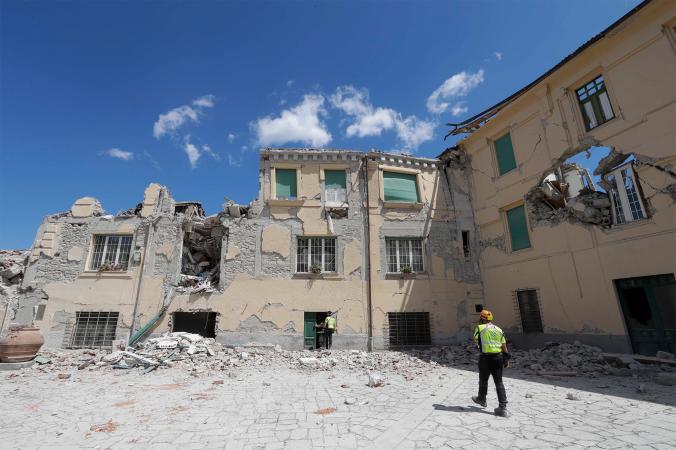Uncategorized
Earthquake Safety Tips
Earthquakes are a common occurrence, rumbling below Earth’s surface thousands of times every day. But major earthquakes are less common. Here are some things to do to prepare for an earthquake and what to do once the ground starts shaking.
A major earthquake can cause:
-Landslides
-Flooding
-Fires
-Power failures
You can take the following action to limit earthquake-related dangers.
-Be prepared
-Follow earthquake safety rules
-Make your environment safe after an earthquake
-Evacuate your home
-Return to your home when authorized to do so
Be Prepared
To ensure your safety:
-Establish a family safety plan.
-Always have an emergency kit on hand.
-Identify safe places where you can take shelter quickly, locate a place in each room of the house that you can go to in case of an earthquake. It should be a spot where nothing is likely to fall on you, like a doorframe.
-Consult a professional to learn how to make your home sturdier, such as bolting bookcases to wall studs, installing strong latches on cupboards, and strapping the water heater to wall studs.
-Solidly secure furniture, such shelves and bookcases, as well as objects hanging on the walls.
-Avoid placing heavy objects on top of a shelf or above a headboard.
-Store chemical or flammable products away from sources of heat and in a place where they are less likely to spill.
-Know how to turn off your gas and water mains.
-Put non-slip mats under electronic devices and small household appliances, or secure them with Velcro tape.
-Keep a supply of canned food, an up-to-date first aid kit, 3 gallons (11.4 liters) of water per person, dust masks and goggles, and a working battery-operated radio and flashlights in an accessible place.
Follow earthquake safety rules
You can ensure your protection during an earthquake.
If you are indoors:
-Remain inside.
-Take shelter under a heavy piece of furniture (table, desk, bed).
-Hang on to the piece of furniture in order to remain protected.
-Cover your head and torso to protect yourself from objects that could fall during an earthquake.
-Crouch alongside a wall if you cannot take shelter under a heavy piece of furniture or you are in a hallway.
-Stay away from windows and doors.
If you are in a wheelchair:
lock the wheels and protect your neck and head.
If you are in an elevator:
select all of the floors and exit the elevator as soon as possible.
If you are outdoors:
-Remain outdoors.
-Take shelter in an open area, away from buildings and far from crowds if you are in a busy place.
If you are driving:
-Stop the vehicle in a safe place, away from buildings, bridges and overpasses, and make sure that you are not blocking the road.
-Stay inside the vehicle.
-Listen to the radio for instructions from the authorities.
-Do not get out of the vehicle; wait for someone to rescue you if power lines have fallen on the vehicle.
If you are in a bus:
-remain seated until it stops. Then take shelter in a protected area. If that is impossible, remain seated, bend forward and protect your head.
-Earthquakes can cause huge ocean waves called tsunamis. Stay informed of warnings if you live or find yourself near the ocean, and follow the tsunami safety rules.
-If an earthquake occurs, consult the media in your area to obtain a status report and find out about the steps to take.
Make your environment safe after an earthquake
Aftershocks are frequent following a major earthquake. Remain vigilant and make sure that your home is safe.
Take the following steps:
-Inspect your home for structural damage or other dangers; if you are in doubt about the safety of the premises, do not enter, and contact a building inspector.
-Wear sturdy shoes and protective clothing to avoid injuries caused by debris, particularly broken glass, when you inspect your home.
-Take pictures to document the damage to your home, and notify your insurer so the damage is assessed.
-Be alert to water, flammable liquid and gas leaks (gas leaks give off an odour), and shut off the supply if necessary or if in doubt.
-Clean your home to get rid of any debris; be alert to harmful products that may have spilled and use protective gloves and glasses.
-Make sure that the water is fit for consumption, particularly if a water main burst.
-Sort the food that was in the refrigerator and freezer if there was a power failure of more than six hours, and throw away any food that shows signs of deterioration.
After you have ensured your safety and that of your family, offer assistance to neighbours, as needed. Organize rescue operations if there are persons trapped under the rubble, or contact emergency services if you cannot help them without putting your safety at risk.
Evacuate your home
If the authorities require it or you believe your safety is in jeopardy, evacuate your home. Inform your family or the municipality of the place where you plan to stay temporarily.
Return to your home when authorized to do so
If the authorities allow it and your safety is not jeopardized, return to your home, preferably during the day, when problems and hazards are easier to see. When you arrive, take pictures to document the damage to your home.
SOURCES:
www.urgencequebec.gouv.qc.ca
www.nationalgeographic.com

